The importance of authenticity and values in leadership


What makes a business responsible? A deceptively simple question which is often the source of complex debate, writes Stephen Howard.
To mark Responsible Business Week 2015, we asked this very question to over 2000 members of the public to try and get under the hood of what responsible business means today. Their verdict? Treating employees well is the most important sign of a good business. Interestingly this ranked higher than some of the more traditional outward facing activities - sending a powerful message that being a responsible business today requires much more than CSR reports and values statements.
The notion that simple philanthropy, giving cash or ad hoc CR defines a business as responsible is simply outdated. There is far more to being a good business than these activities and the public and employees are savvy enough to recognise this. To be genuinely perceived as responsible a business must have values that influence everything it does - from how it treats employees and uses natural resources to how it operates within the community and down the supply chains.
Business leaders are at the heart of ensuring that values are embedded within the company culture and throughout the organisation - which is why I believe that authenticity is the most important trait that must underpin how they act and lead.
Authentic business leaders inspire trust because they understand the wider purpose of business – a purpose which is far beyond simply generating a profit. Authentic leaders are humble, they recognise their own limitations and understand that a responsible business cannot be created from the top down and instead must involve collaboration across and through the business to bring employees on board. Transparency - particularly in our 24/7, digital news era in which business failures and wrongdoing are rapidly shared and amplified – is also essential. Finally, I believe that the underpinning-defining characteristic of an authentic leader is one who creates value by living their values.
Of course fostering a values driven culture is not easy but there are some practical steps business leaders can take to demonstrate their authenticity.
1. Create a clear long and short term vision aligning your personal values to your business goals
The average length of service of a chief executive in the FTSE 350 is a little over 6 years - a relatively short time to make an impact and create transformational change within a business. As well as considering their immediate impact, CEO’s must set strategies that extend beyond their own short tenure which balance short-term business pressures with the long-term sustainability of the business and society. At the same time it is important that CEO’s develop a shared vision for the business, which aligns their personal values and business goals, and develop a business strategy, which lifts up the synergy between commercial activity and sustainability.
2.Demonstrate your values and reward the behaviours you want to see more of in your business.
Authenticity means leading by example. Chief executives everyday decisions and behaviours set the tone and spirit of an organisation. They are the ones that represent and embed a culture of honesty, and integrity and they have the power to embed values into business strategy. Without values truly being part of ‘business as usual’ for every employee it will in many cases continue to be perceived as the job of the CSR manager or team, instead of a shared responsibility across the business. To make values actionable business leaders must think about how they demonstrate, recognise and reward it. Key to this is ensuring that every employee, at every level, understands that responsible behaviour is genuinely expected and encouraged. For example, ensuring organisational values are built into team targets, personal KPIs, objectives and performance reviews for individual employees. Transparency is also key – however it is equally important that leaders react swiftly when behaviour occurs that falls short of organisational values.
3.Think beyond financial return – start identifying and communicating the long term value creation
Despite pockets of progress, financial value continues to be seen as the most recognised metric of business success amongst large sections of the investor community. Shifting this will take greater collaboration and transparency then ever from CEO’s and a genuine willingness to engage with investors to articulate how a responsible approach to business will build trust and create value. Stakeholders outside of the business including NGOs will be key partners to help business articulate the broader economic and social value that business creates.
4.Develop the next generation of responsible leaders
Enabling employees to have experiences outside of the business to help nurture their values and decision-making is a powerful and practical way for business leaders to develop this next generation and enable them to influence business strategy. Allowing days off for secondments, volunteering, mentoring and immersive learning are all examples of experiences that business leaders can offer their staff to help build advocacy for responsible behaviour and imbed a more responsible mindset. Leaders such as Duncan Tait, CEO of Fujitsu, Sir Andrew Witty, CEO of GSK, and Steve Holliday, CEO of National Grid are great examples of leaders who understand the value and power of sending staff out of the business. Business in the Community has sent over 9,000 senior business leaders out into the communities as well as a further 155 full time business secondees – through programmes that are reaping rewards for business and society.
5.Be an advocate
Authentic business leaders are willing to put their head above the parapet and share what they are doing how and why. I spend much of my time speaking frankly with CEOs of some of our largest brands and on the whole the leaders I meet share a common desire to do the right thing and make a difference. They are increasingly recognising that responsible practice adds value to their business – the challenge often is encouraging more of them to articulate this, which is why Business in the Community regularly convenes CEOs to enable shared learning and foster collaboration.
Business leaders that act on their commitment to creating a fairer society and a more sustainable future will foster the values and culture that will encourage innovation and regain trust. Furthermore, by demonstrating the wider value that responsible business creates for society business leaders will encourage many more businesses to join the growing responsible business movement.
Stephen Howard is ceo of Business in the Community, the Prince’s Responsible Business Network.
The significance of measuring sustainable impact

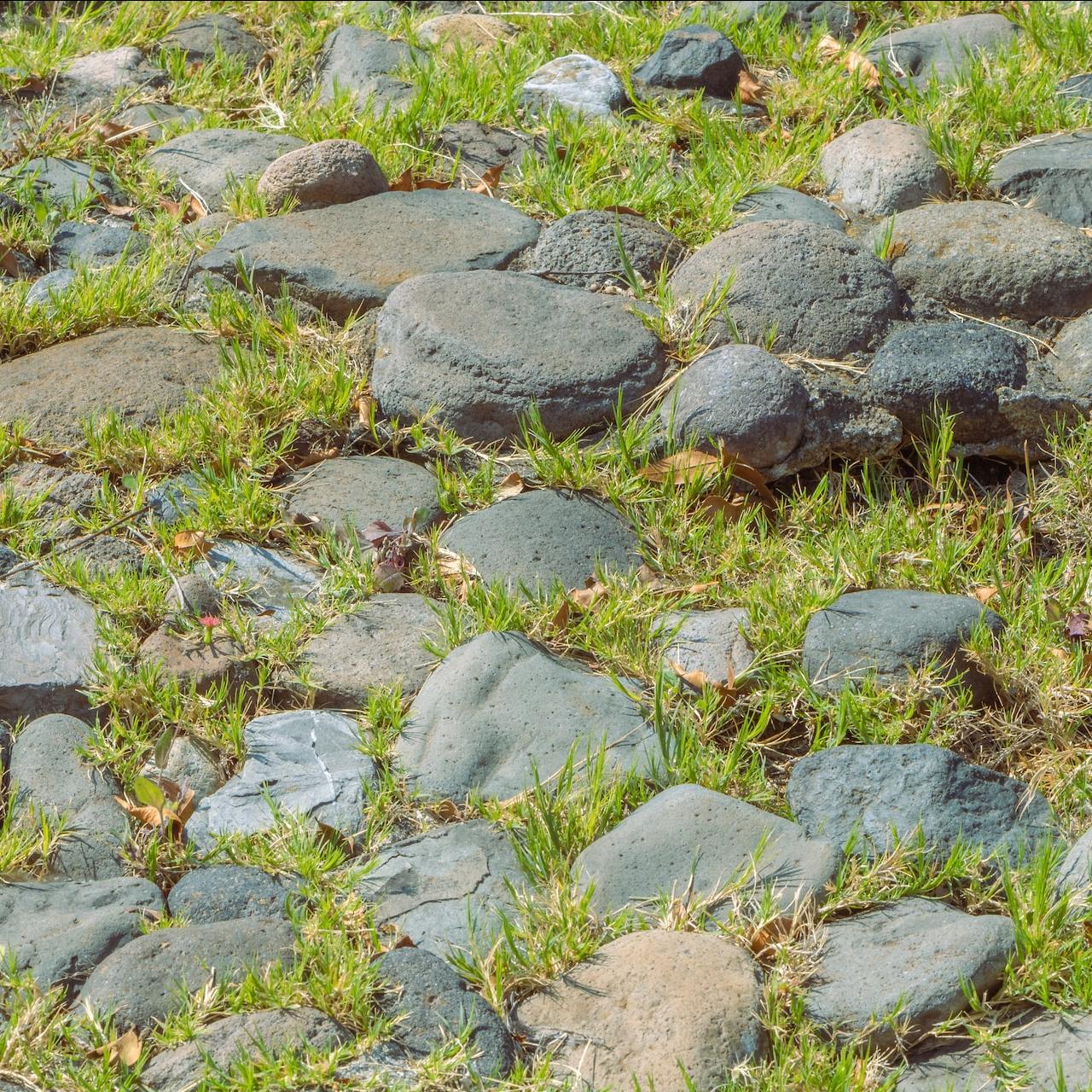
Photo by Alexander Cifuentes on Unsplash
Last month Acre announced the winners of the first Acre365 recognition programme, writes Andy Carltand. There are other award schemes in the sustainability field, but Acre365 is different as it judges entrants only upon the impact they have within the first year of employment with a new company, a critical period where the foundations of change can be laid that can help address critical challenges.
In early 2014 we began to explore a model of measuring our own performance according to the impact that we were having on key environmental and sustainability issues via the candidates we placed. Recruitment firms play a key role of catalysing market places; we do so by sourcing individuals for organisations who can drive businesses or agendas forward. If we are judged according to this criteria, we know that we’ll be both fulfilling our clients requirements whilst growing as a commercial entity. We’ll also have a business to be proud of. This thinking formed the basis of Acre365 as well as a new mission statement for Acre: “Acre connects professionals with a common purpose; to create social and environmental value and promote good business. We measure our success one individual at a time.”
Judging for Acre365 took place in February 2015 and the winners were announced in April 2015. Three key themes stood out:
The use of data. The best applications measured and manipulated data in order to quantify and create visibility of key sustainability factors within their companies – frequently this applied to energy usage, carbon or HSE data but more frequently, broad social, environmental and financial impacts were measured in a holistic fashion. Winner of the Environment Impact Category, Paul Eggleton - Energy Director at Mitie (on behalf of Lloyds Banking Group), had a target to reduce its environmental footprint by 20% by 2020. At the heart of his changes was a push to move to a more data driven approach.
Communication and relationship skills. Evidence of engaging audiences through a wide range of communication tools such as events, intranets and speaking events were prevalent. In particular, those who were able to communicate the commercial benefits of sustainability programmes were seen to be effective in their roles. Acre365 Combined Category winner Christina Houlgrave developed an economic model to place a value on the economic, social and environmental impacts of Skanska in the UK. Key to the effective delivery and utilisation of the data gathered was her ability to achieve support from the Finance department and the senior management team. Without the ability to effectively engage with the business, data collection can be futile.
Innovation, particularly with digital mediums. The judges were particularly impressed by the development of digital tools and platforms which enabled businesses to achieve larger impacts, particularly due to the ability to achieve dramatically increased numbers of touch points. Robbie Bates, senior designer of consultancy Uscreates, won the Social Impact Category by virtue of devising a digital toolkit which allowed patients and the public to recommend service improvements to the NHS.
A key aim of Acre365 was to curate the actions and activity of high impact people, some of whom are mentioned above. We hope that by showcasing what such people have achieved, others will learn and be inspired. Many case studies are available at www.acre.com/acre365. We also expand on the three themes described above in our white paper “An insight into Success” which can be downloaded from the same page.
Andy Cartland is founder and director of Acre
3p Weekend: 18 Panels to Catch at Sustainable Brands (Even if You're Not Going)
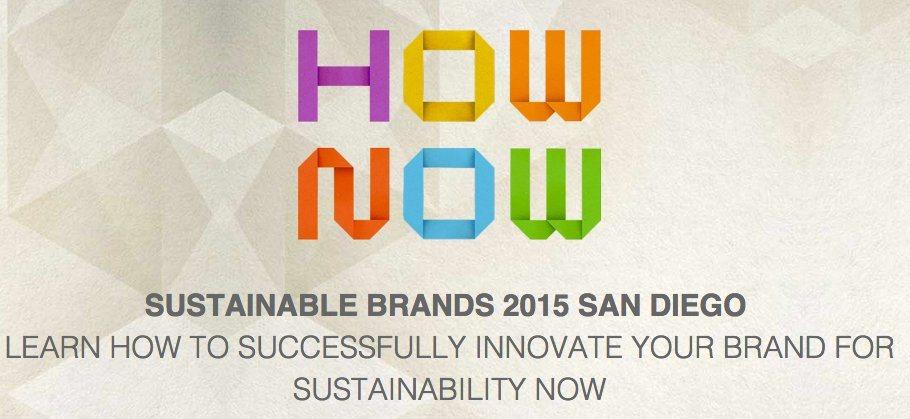

With a busy week behind you and the weekend within reach, there’s no shame in taking things a bit easy on Friday afternoon. With this in mind, every Friday TriplePundit will give you a fun, easy read on a topic you care about. So, take a break from those endless email threads and spend five minutes catching up on the latest trends in sustainability and business.
Bummed you can't make it this year's Sustainable Brands conference in San Diego? You're not alone. With busy work schedules and prior commitments, it can be tough to clear a full week for learning (and fun) in Southern California.
Time for the good news: While we can't bring you the San Diego sun, this year you can catch some of the hottest Sustainable Brands panels right from your living room (or cubicle, as the case may be). Thanks to sponsor CVS Health, those who can't attend SB'15 in person can still watch plenary sessions live, or on demand, for free.
So, don't let your friends have all the last-minute SB planning fun. Pull up your calendar, and start making time for these Sustainable Brands sessions you can watch live from home.
Monday
1. Opening Plenary Remarks: From What If to How
Kick off the Sustainable Brands conference just like the attendees do -- with opening remarks from SB founder and CEO, KoAnn Skrzyniarz. As always, she'll set expectations for the conference and update the audience on conversations the global Sustainable Brands network has facilitated and hosted over the last year.
When: Monday, June 1, at 4:45 p.m. PT Register here
2. How to Make Tomorrow Love Today: Meeting Society’s Needs Sustainably in the 21st Century
In this opening-day panel, Charlene Wall-Warren, director of sustainability for conference sponsor BASF, will outline ways in which the company is "strengthening its innovation processes to bring a range of chemical solutions that meet society’s 21st-century needs." From urban living, to food, to smart energy – learn how BASF is future-proofing itself through smart analysis, engagement, innovation and co-creation.
When: Monday, June 1, at 5:40 p.m. PT Register here
Tuesday
1. How Millennials and Gen Z are Changing the Game, and How a Chief Futurist Can Help
Ever hear of a Chief Futurist? Ford has. In this talk, Ford’s Chief Futurist Sheryl Connelly will unpack the value her job delivers to the rest of the company. She'll dive specifically into "recent insights her team has reached about the ways Millennials and Gen Z are reshaping the relationship between brand authenticity and trust," SB says in its event program.
When: Tuesday, June 2, at 11 a.m. PT Register here
2. How to Intersect Sustainability and Marketing, Sell More by Selling Less and Drive Positive Impact
"While sustainability leaders are rallying everyone to ‘save the world’ with them, marketing executives’ first reaction is to frown at the complex sustainability agendas shoved in front of them. Indeed, marketers can feel that sustainability limits their creativity – after all, sustainability colleagues often seem to bring a dense, grim, wonky load of reality checks and demands," SB points out.
Heineken knows all about this difference and has taken some interesting steps to alleviate the friction. Learn more from Michael Dickstein, the company's global director of sustainable development.
When: Tuesday, June 2, at 11:20 a.m. PT Register here
3. How Major Technological Advances will Enable a More Sustainable Future
In this session, Chandrakant Patel, senior fellow and chief engineer for HP, will summarize promising ways in which "innovation in computing, connectivity and 3-D printing is enabling a more sustainable future."
Expect not only a portrayal of the near future of tech innovation, but also an outline of specific sustainability-driven applications in smarter corporate, city and home infrastructure.
When: Tuesday, June 2, at 12 p.m. PT Register here
4. How to Close Material Loops and Drive Value from Innovative Partnerships
The Closed Loop Fund has attracted considerable attention since launching several months ago as a $100 million dollar joint investment of Procter & Gamble, Walmart, Coca-Cola, Goldman Sachs and other Fortune 100 brands.
This presentation will analyze the value and potential of the newly-formed Closed Loop Fund. Len Sauers, VP of global sustainability for Procter & Gamble, will also touch on other partnerships the company has joined in advancing corporate sustainability agendas.
When: Tuesday, June 2, at 11:40 a.m. PT Register here
5. How to Become Part of the Next Generation of Winning Brands
Looking to engage Millennials and Gen Z with design, certification and marketing? Learn from the pros in this Tuesday afternoon session.
Jeffrey Hollender, co-founder and CEO of Hollender Sustainable Brands, co-founder of Sustain Condoms and former CEO of Seventh Generation, and Meika Hollender, co-founder and marketing director at Sustain Condoms, explain.
When: Tuesday, June 2, at 12:15 p.m. PT Register here
6. How the Correlation Between Sustainability and Brand Strength has Changed in the Last Few Years
CSRHub, the world’s largest database of sustainability information, teamed up with Brand Finance, creator of the world’s largest database of brand values, to "combine analytical powers and examine the relationship between brand strength and corporate sustainability."This presentation from Cynthia Figge, CEO and co-founder of CSRHub, will share the latest results.
When: Tuesday, June 2, at 4 p.m. PT Register here
7. How to Galvanize an Entire Industry by Deepening System-level Understanding
Through the leadership of its president, Craig Shiesley, Silk is launching a new effort to shift the current 2050 food trajectory by "changing how food brands operate and how consumers think about food."
As the leading plant-based food and beverage brand, Silk surely has a role to play. Craig Shiesley, who leads WhiteWave Foods’ plant-based food and beverage business in the U.S. and Canada (including the Silk portfolio and So Delicious Dairy Free beverages), will talk about this new mindset in an SB presentation.
When: Tuesday, June 2, at 4:35 p.m. PT Register here
Wednesday
1. How to Lead for Sustainability, and What Engagement Levers to Pull both Internally and Externally
In this must-see panel on Wednesday, Marc Gunther, editor-at-large of Guardian Sustainable Business U.S., sits down for an interview with Chip Bergh, president and CEO of Levi Strauss & Co. Tune in to hear about sustainability leadership, stakeholder engagement and product design.
Their conversation will be followed by a presentation by Paul Dillinger, head of global product innovation at Levi Strauss, a perennial favorite at conferences from SB to SXSW Eco.
When: Wednesday, June 3, at 10:40 a.m. PT Register here
2. How to Unify and Scale Sustainability Strategy across a Multi-brand Portfolio
VF Corp., a 25-brand parent company that includes labels like The North Face, Timberland, JanSport and Wrangler, among others, is making huge strides in sustainability.In this session, Letitia Webster, the company's global director of corporate sustainability, explains how the company is integrating its brands' individual sustainability strategies and rolling them up into a "unified parent-corporation center of goal-setting, excellence and governance."
When: Wednesday, June 3, at 11:35 a.m. PT Register here
3. How to Improve the ROI of Business Model Innovation and Scale it to New Heights
"Interface is a brand name that has become practically synonymous with corporate sustainability over the last couple of decades. Despite all of the company’s ambitious efforts and accomplishments, there still are fascinating aspects of its sustainability strategy that aren’t as well-known as they should be," SB says in its event program.
We know a little something about the ROI of sustainability here at TriplePundit, so we're pretty pumped for this one. On Wednesday afternoon, John Bradford, chief innovations officer for Interface, will talk about how the company is scaling a key pillar of its sustainability agenda to new heights.
When: Wednesday, June 3, at 12:15 p.m. PT Register here
4. How to Generate New Layers of Value from Innovative Peer-to-peer Models
GoodGym is a "quickly growing group of runners who combine regular exercise with helping nearby communities – whether by visiting isolated elderly people, repairing various kinds infrastructure, or a number of other activities," SB says.That's pretty awesome on its own, but it's not the whole story. This peer-to-peer economy model teamed up with footwear giant New Balance to create even more shared value. Tune in for the scoop on what SB calls "one of the defining moments in mainstreaming the peer-to-peer economy."
When: Wednesday, June 3, at 4:50 p.m. PT Register here
Thursday
1. How a New Connected Life Can Transform Communities, and How to Know if Customers Care
From the devices we use daily to the increasingly connected offices and cities in which we work and live, the digital age brings clear convenience benefits. But can it also help us live a more sustainable lifestyle?
In this session, John Schulz, assistant vice president of sustainability operations for AT&T, will discuss how the expansion of mobile technology is empowering consumers to live more independently and sustainably. He'll share what "steps AT&T is taking to bring new sustainability-driven innovation to consumers" and "how AT&T’s consumer engagement measurements have helped guide a new multi-pronged strategy."
When: Thursday, June 4, at 10:40 a.m. PT Register here
2. How Digital Innovation and Strategic Collaboration Can Drive Consumers to More Sustainable Goods
"For over five years, Walmart and more than 100 suppliers, several leading NGOs and government agencies have worked with The Sustainability Consortium (TSC) to build the Sustainability Index program," SB says in its event program. The index gives brands information about suppliers and helps them manage their social and environmental impact across entire product lifecycles. In February, Walmart took things a step further by launching its Sustainability Leaders badge program.
In this session, author and sustainability consultant Andrew Winston talks to Manuel Gomez, VP of sustainability at Walmart, to learn more.
When: Thursday, June 4, at 11 a.m. PT Register here
3. How a Science-based Company is Listening, Learning and Engaging with Stakeholders
3M was publicly targeted by ForestEthics at last year's Sustainable Brands, but how far has it come since then?
In this session, Andrew Winston talks with Gayle Schueller, VP of global sustainability for 3M, to find out how the company balances an increased focus by consumers and investors on social responsibility.
When: Thursday, June 4, at 11:20 a.m. PT Register here
4. How to Build a Bright Future Inside and Out
In this talk, we'll hear from Jonathan Atwood, VP of sustainable living and corporate communications for Unilever. We don't have many details on what he'll be talking about. But, with Unilever's track record in sustainability leadership, we're willing to spend 20 minutes to find out.
When: Thursday, June 4, at 11:40 a.m. PT Register here
5. How to Inspire People from All Walks of Life to Do a Tonne of Good
Stand For Trees is an innovative collaboration between Code REDD, USAID and Facebook, among others. It represents a "first-of-its kind consumer campaign that uses the power of social media and crowdfunding to enable everyone to purchase verified carbon offsets and take real and effective action to prevent deforestation and curb climate change."In this talk, songwriter and performer Prince Ea explains the program and why it matters. Offstage, Prince Ea is founder of Make SMART Cool (SMART being an acronym for Sophisticating Millions and Revolutionizing Thought). "The organization seeks to promote positive social change in various concrete ways from speaking at schools, organizing community events, benefit performances, partnering with community organizations and setting up educational mentorship programs," SB says.
When: Thursday, June 4, at 12 p.m. PT Register here
Want to make sure you don't miss a beat from this year's Sustainable Brands conference? Be sure to check out TriplePundit next week for coverage, and follow the hashtag #SB15sd on Twitter.
New Film Documents the True Cost of Fashion


When Andrew Morgan picked up the newspaper one morning in 2013, his heart broke and his socially-conscious-filmmaker mind went into overdrive. That April he read about the catastrophic collapse of a Bangladeshi factory that killed more than 1,100 garment workers. For the next two years, he decided to devote himself to documenting the untold story of the people and places that pay the price for the clothes we wear – the result of which is the documentary film "The True Cost," which premiers worldwide today.
“Before making this film, there was so much I didn’t know because I was one of those people who didn’t really think about what I wear,” Andrew Morgan, director of "The True Cost," told TriplePundit in a recent interview. “The [apparel] industry is built upon the assumption that you and I don’t care and we won’t ask questions about how our clothes are made. I want to reveal the curtain and show people what’s going on, so we can all say that we want something better.”
The 90-minute film exposes the social and environmental costs associated with our current global apparel system and explores the unsustainable business model that has increasingly become the status quo.
Including interviews with such figures as environmental activist Vandana Shiva, organic cotton advocate LaRhea Pepper and Fair Trade fashion pioneer Safia Minney (and many more), the film takes the viewer on a journey around the globe to witness the high cost of cheap clothing – from chemically intensive, cancer-causing cotton farms in Texas to deadly garment worker protests in Cambodia.
“When you spend time in these countries with these people, the reality of the impact is felt on a really deep level,” Morgan said. “You can hear a statistic and it can sound distant, but being in a place where you’re seeing waste pollute local water, where 80 percent of children are sick, you see that this isn’t hypothetical – you see that this is a reality.”
While the film does a formidable job of giving a voice to the silent soldiers who sacrifice much to make what we wear and fuel our Western way of life, the one voice that is palpably absent from the film is that of big fashion retailers – those global companies who undeniably have a say in how our clothes are manufactured and marketed. According to the film, producers invited a number of major clothing brands (none specifically named) to be interviewed, but they declined to comment.
Considering that the trillion-dollar apparel industry is the second largest polluter in the world (behind the oil industry), not saying anything says a lot.
Even so, the film tells a compelling, and increasingly important, story about the high social and environmental price of our world’s growing materialism. As the film highlights, the more labor is outsourced to developing countries and clothing prices go down, the more external costs go up – and that is a problem.
“I'm hopeful that people will watch this film and have a shift in consciousness,” Morgan told us. “I want people to never be able to pick up a piece of clothing in the same way. I don’t look at clothes the same way anymore.“The process of making this film changed my life.”
I think this film might change your life, too.
Check out the film's trailer below:
Image courtesy of "The True Cost"
Intel Installs Wind Micro-Turbines On HQ Roof
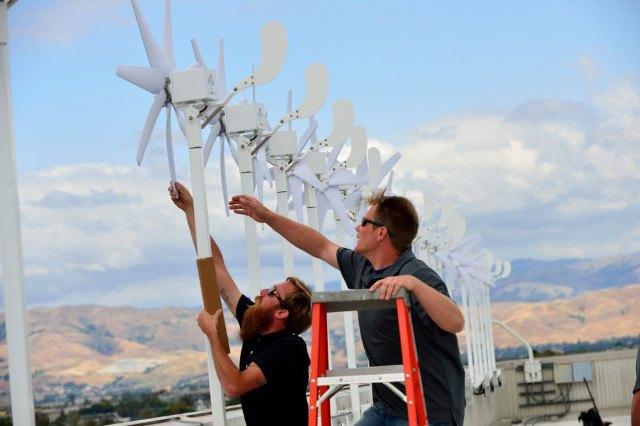

When we think of rooftop renewable energy, solar immediately comes to mind. However, wind micro-turbines can also be placed on a roof. Intel knows all about it. The company recently installed one of the world’s largest wind micro-turbine arrays on the roof of its headquarters in Santa Clara, California.
Intel installed 58 micro-turbines that are between 6 and 7 feet tall, weighing about 30 pounds. The micro-turbines are what’s called a proof-of-concept project, meaning that the company hopes to collect data to provide a better understanding of green power. Intel plans to share the data collected with local utilities, other companies, the wind power industry and other interested parties.
The micro-turbines prove that bigger really isn’t always better. Their small size means that they are versatile in their uses and applications. They are expected to generate power about 65 percent of the time, or 65 kilowatt-hours. They have been installed on the roof’s edge in order to best capture the wind and provide optimized power generation. There is enough room for solar panels, which are also installed on the roof.
Intel is a green power leader
This isn't Intel's only renewable energy project. The company also operates a solar electric facility in India that supplies almost 100 percent of the hot water used at its two largest campuses in the country. It saves Intel approximately 70,000 kilowatt-hours worth of energy each year.
Other renewable energy projects include:
- Piloting wind micro-turbines and ground-source heat pumps at its site in Guadalajara, Mexico
- Bringing 2 megawatts of fuel cell power online at its sites in California
- Installing 21 solar electric facilities across 12 of its campuses around the world, totaling 12 million kWh a year
"Our renewable purchase is just one part of a multi-faceted approach to protect the environment, and one that we hope spurs additional development and demand for renewable energy," said Intel director of global utilities and infrastructure, Marty Sedler.
In addition to onsite renewable energy, Intel is a large purchaser of green power. Earlier this year, Intel was recognized as the largest voluntary purchaser of green power in the U.S. for the seventh consecutive year by the U.S. Environmental Protection Agency’s Green Power Partnership. Last year, Intel bought enough renewable energy certificates (RECs) to meet 100 percent of its U.S. electricity use for the year, which totaled approximately 3.1 billion kWh. Intel’s power from REC purchases come from wind, solar, geothermal, low-impact hydro and biomass sources. All of them are third-party certified.
Image credit: Intel
BASF CreatorSpace NYC Confronts Post-Sandy Neighborhood Realities
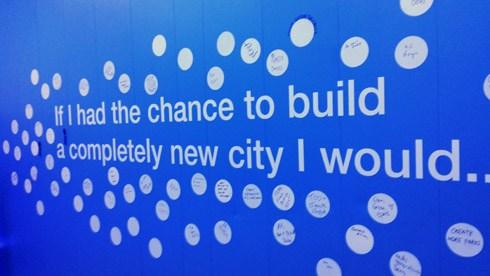

Editor's Note: This post is part of TriplePundit's coverage of BASF Creator Space: New York, held May 26 through May 31 in NYC. Check back for more coverage here on 3p.
Chemical giant BASF has been a supplier to the construction industry for most of its 150-year history. That’s a multi-stakeholder business if there ever was one. It’s a great place to learn about engagement, which might just be the key to the company’s success.
So, its Creator Space Summits, which will take place in New York City, Mumbai, Shanghai, Sao Paolo, Barcelona and Ludwigshaven, are a natural way for them to commemorate their sesquicentennial, by inviting an array of co-creators to wrestle with challenging problems of our time.
The NYC event is grappling with the question of the future of Red Hook, a vibrant, ethnically and economically diverse neighborhood at the southern tip of Brooklyn, which lies almost entirely inside the flood zone designated by FEMA in the aftermath of Sandy, the hurricane that devastated the area. Gathered in a spirit of collaboration were dozens of architects, engineers, designers, artists and Red Hook residents. The conveners raised difficult questions. Can the people and property of Red Hook be protected from future storms? Should people even be living there as the oceans rise? Can protection be provided without turning the place into a soulless fortress?
Yes, we put a man on the moon, but what was the quality of life aboard an Apollo spaceship? BASF CEO Wayne T. Smith welcomed the group with this message. "At BASF, we believe that chemistry is a fundamental enabler to many of the potential solutions of many of these problems. As we celebrate this milestone, we are connecting people with ideas to make meaningful contributions to society in accordance with our corporate purpose: 'We create chemistry for a sustainable future.’” Alex Washburn, founding director of the Center for Coastal Resilience and Urban Xcellence at Stevens Institute of Technology, added in the opening roundtable, “We need to start thinking like Renaissance men.”
The group broke up into three subject areas: citizenship, habitat and resilience, and workshopped problem statements and solutions.
Providing inspiration to the teams was a viewing of the film "Urbanized," introduced by the director Gary Hustwit, and a talk by futurist Alex Steffen, author of "Worldchanging" and "Carbon Zero."
Among the solutions developed by the teams were:
- A hybrid storm protection system that would include permanent barriers surrounding the oceanfront -- creating a shallow embayment, topped with a bike path, supplemented with deployable flood barriers in the most vulnerable parts of the neighborhood. (Resilience)
- A Red Hook Resiliency Toolkit, developed for and by building owners and residents in the community with input from various experts. (Resilience)
- A Utopia Task Force described numerous ways to improve the lives and increase inclusion of the substantial population living in public housing. Goals are to increase homeownership, build community and improve economic conditions through an incubator. (Citizenship)
- I Am Many aims to provide a bridge between the diverse inhabitants of Red Hook, level the influence playing field and encourage local entrepreneurs. (Citizenship)
- A green corridor to provide cohesion and connectedness in the community with a green corridor including green space, pedestrian and bike paths, clean energy, and drainage features (Habitat)
- Red Hook Rebirth: a replicable site-plan template for a single city block featuring low-rise multi-use buildings. The plan includes the elements of architecture, public green space, social programs and energy. A key success element of this plan is resource sharing at the block level as a social unit. (Habitat)
Throughout the event was an optimism that seemed to say, “We can figure this out.” It was clearly about moving forward, not backward, whether it was Wayne T. Smith talking about chemistry’s contribution or Alex Steffen talking about building our way out of this mess.
Even though these same factors -- building, chemistry and growth -- are often placed at the heart of our ecological crisis, there was a sense permeating the room here, insistent as a drumbeat, that it is far more a matter of doing these things correctly, than it is about doing less of them or not doing them at all.
Image credits: RP Siegel
Taco Bell and Pizza Hut Slash Artificial Flavors and Colors
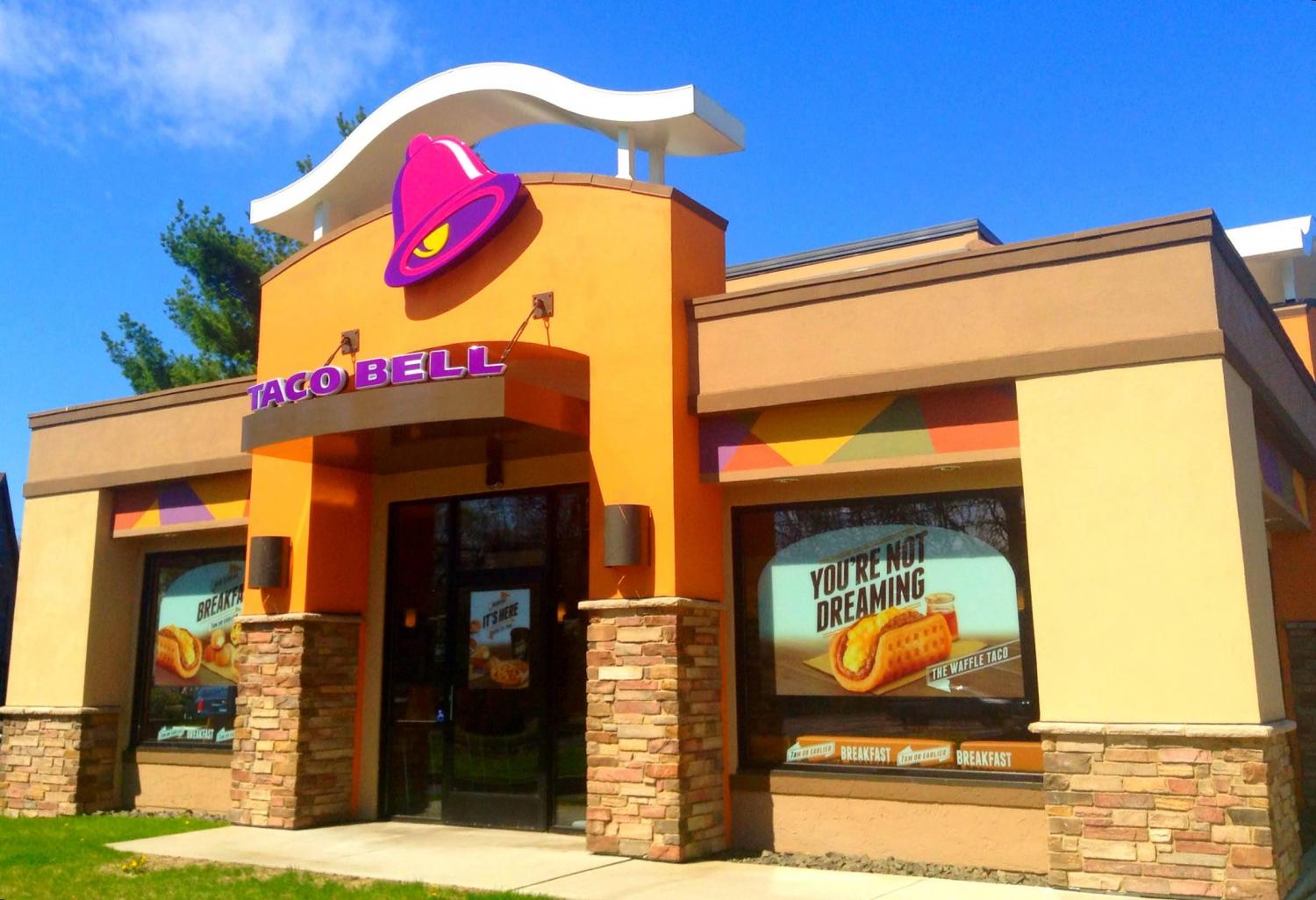

Taco Bell and Pizza Hut are jumping aboard the natural food bandwagon, joining Chipotle and other leading fast-food restaurants in eliminating artificial colors and flavors. And in the modern-day race to be more transparent with food recipes, Taco Bell takes the silver in Tex-Mex cuisine while Chipotle eats it's no-additive, color-dyeless cake.
Taco Bell, a California-founded fast food restaurant in its 53rd year in business, is getting rid of the artificial dye, Yellow No. 6, that colorizes its nacho cheese, along with Blue No. 1 that brightens its avocado ranch dressing. The chain will begin using real ingredients, as opposed to the foods tagged with labels that read “artificially flavored.” It also says it will take out high-fructose corn syrup and unsustainable palm oil from its food by the end of 2015 and remove preservatives “where possible” two years after.
Liz Matthews, Taco Bell’s chief food innovation officer, suggested the new recipes that take advantage of the new, more natural ingredients are being tested in select markets and could be in all stores nationally by the end of the year.
The restaurant that popularized Doritos Locos Tacos took a bad public relations hit in 2011, when an Alabama attorney sued Taco Bell over its right to call their taco meat “beef,” claiming it was only 35 percent beef and 65 percent mystery. Although the firm closed the case because Taco Bell’s response revealed 88 percent of the meat was beef, it didn’t come without the price of a few eyebrow raises and a few million dollars in advertising to salvage the company's reputation.
The pair of restaurants, owned by Yum Brands, are just the next chains in line that are attempting to stay ahead of the curb and not scare customers off by hiding their recipes. Panera Bread, McDonald’s, Subway and Arby’s, among others, have all expressed willingness to switch up recipes for one or more products to satisfy the buyers' needs.
In a need to compete with Chipotle and other smaller-market restaurants, Taco Bell is taking strides to become more transparent with the ingredients it’s using for its food. Chipotle prides itself on serving beef made from grass-fed, drug-free, local cows. In April, Chipotle announced it would become a genetically modified organism-free restaurant.
Pizza Hut said it will remove artificial flavors and colors as soon as July. Subsequently, the pizza chain will list all of its ingredients online after all the recipes reflect the new initiative.
Fast food restaurants have long been the safe haven for families struggling financially to purchase a quick, cheap meal even if it meant ignoring nutritional facts. While the new food produced from these dumbed-down, more naturalized ingredients may not directly reflect healthier options at fast food joints, it will at least serve as a looking glass for customers to see exactly what they’re putting in their bodies.
Chipotle is the trendsetter, but the trend will almost certainly not end with Taco Bell and Pizza Hut.
Image credit: Flickr/Mike Mozart
Underpaying Workers Raises Pressure on Strained Government Agencies
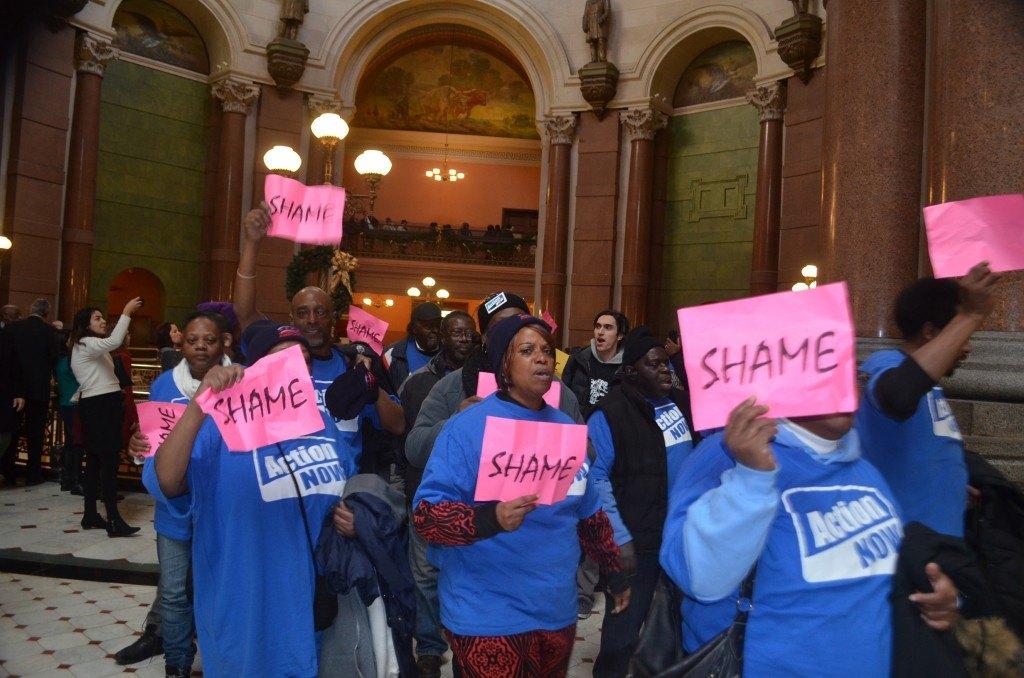

Campaigns to raise the minimum wage have stirred up a hornet's nest of debate and controversy across the U.S. Shaking the foundations of U.S. society, historically wide disparities in income and wealth are now at the forefront of today's political and economic debates.
Nowhere is this more apparent than the debate about raising minimum wages. Prodded into action by protesting low-wage workers employed by huge, highly profitable service-sector companies such as McDonalds and Walmart, city governments around the country have or are considering raising minimum wage levels to what's considered a fair living wage of $15 per hour.
Firing up the debate, Seattle passed a law raising the minimum wage to $15 an hour last year. Voters in San Francisco approved raising the minimum wage to $15 an hour as well. Doing so will improve the livelihoods of an estimated 142,000 people working in the City by the Bay – 23 percent of the workforce. Raising the minimum wage in Seattle will improve the lot of some 102,000 workers – 21 percent of those working in the city, the city said.
The disputed right to a "living wage"
Supporters of raising the minimum wage point out that by not paying a livable wage to workers, large, highly profitable companies are essentially freeloaders. Under-paying employees forces working Americans to seek financial aid and other assistance from government agencies, which raises the strain on public budgets as well as other resources.
“Making minimum wage dooms you to a life of hardship and toil,” Fast Co.exist assistant editor, Jessica Leber, wrote in a May 19 article. “We in the U.S. have accepted or ignored this situation for a long time, while companies make billions of dollars by paying their workers less than enough to survive.”
A growing number of city governments around the country are taking action to remedy the situation. The Los Angeles City Council on May 19 voted 14 to 1 to draft an ordinance that would raise the minimum wage to $15 an hour by 2020. If approved, the measure would provide a substantial boost in income to some 800,000 workers, who now must be paid a minimum $9 an hour.
Chicago's City Council voted to raise the minimum wage to $13 an hour by 2019 last December. Proposals to raise minimum wages to $15 per hour or higher are also being considered in New York and Washington D.C. A bill to raise the minimum wage in San Diego to $11.50 is to be before the voting public as a referendum this year. Nationally, raising the federal minimum wage has risen to the top of the Democratic Party's campaign platform.
Raising the minimum wage: The impacts
Supporters of raising minimum wages point out that income and wealth for the top percentiles of Americans have skyrocketed over the course of recent decades while real (adjusted for inflation) wages and income for the large majority are lower today than they were the 1970s. What has emerged as a result is a less upwardly-mobile society composed of a very small class of “super-rich,” a shrinking middle class, and a large and growing class of working poor.
As has long been the case, detractors assert that raising minimum wages will stifle economic growth and new business formation. Higher labor costs, they say, will either be passed on to consumers in the form of higher prices and/or will drive businesses elsewhere.
In a video produced by MoveOn.org, former Labor Secretary Robert Reich, now chancellor's professor of public policy at the University of California, Berkeley, puts forth three good reasons supporting the case for raising minimum wage levels. During his brief, two-and-a-half minute presentation, he also refutes three assertions commonly cited by opponents, including the assertion that higher minimum wages will prompt businesses to relocate.
Connecticut is looking at taking a somewhat different approach to addressing the issue of fair wages, Fast Co.exist's Leber highlighted in her May 19 article. A proposed bill before the state legislature would assess a fee of $1 per hour for every worker being paid less than a “livable” wage of $15 per hour on all companies with 500 or more employees. The revenues would be devoted to state programs for early childhood development and social services.
"It’s time for us to stop subsidizing these corporations. It’s time they redesign their business models to pay their employees a wage they can live on," one of the bill's sponsors, Democratic state Rep. Peter Tercyak, wrote in a Connecticut Mirror op-ed last year.
*Images credit: 1) Flickr -- Fight for 15 New York/All-Nite Images; 2) US Bureau of Labor Statistics; 3) Raise Illinois Action; 4) MoveOn.org
Money and Climate Change: Can We Foot the Bill?
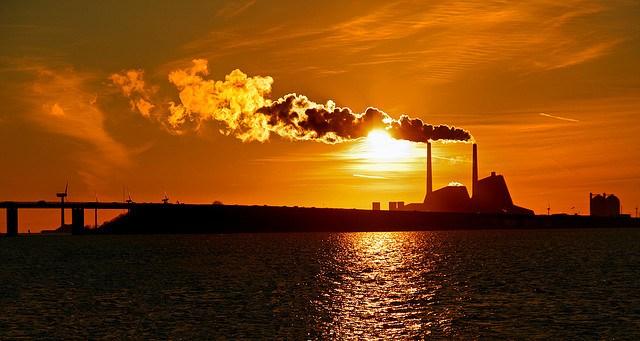

By Joseph Plummer
What is the cost of addressing climate change? This is not a tough question to answer assuming you know the method or methods you are going to use to address climate change. For example, if we wanted to start by zeroing our carbon footprint, we could easily calculate how much money it would take to do so. We can multiply the number of units of dirty energy by the cost to convert them to clean energy, and this would give us the total cost of the transition. So, let’s say we have 20 terawatts of infrastructure that we want to convert to clean energy at an average cost of $2 per watt or $2,000 per kilowatt. That means to convert all 20 terawatts of infrastructure it would cost $40 trillion. That’s a lot of dollars.
The current global money supply (M3) is around $75 trillion, and about $15 trillion of that is tied up in long-term investments. So, more realistically, let’s say we have $60 trillion to work with. Let’s say we spread the $40 trillion of investment in clean energy over the next 20 years. That would mean that $2 trillion would be invested in clean energy every year. This is the equivalent of about 3.33 percent of the money supply every year being devoted to clean energy investment. This is not a trivial amount of money.
Global investment in renewable energy is currently around $300 billion per year. And it will likely increase to around $500 billion per year over the next three years. So, if we are serious about zeroing our carbon footprint, we need to at least quadruple the pace of investment in renewable energy. How can we do that when there are other things like economic development, roads, education, healthcare and defense that need more money too? We need to increase the amount of money we have to work with. The $60 trillion that is our effective money supply has to increase.
Milton Friedman once said, “Most economic fallacies derive from the tendency to assume that there is a fixed pie, that one party can only gain at the expense of another.” There is some amount of money that is necessary to operate and maintain our society. If that amount is greater than the current money supply, then we need to consider increasing the money supply. As climate change becomes more serious, we will be forced to increase spending on either addressing or reacting to climate change. Whether it is installing more solar panels or fixing more broken windows, we will be forced to spend money on climate change.
If increasing the money supply must take place, what will be the effects of that increase on our economy? Will the increase cause inflation? Will an increase in one currency, but not others, decrease the value and power of that currency? Let’s say the United States increases its money supply to invest more in clean energy and sustainable infrastructure. The truth is most economists would agree that increasing the U.S. money supply has the very real potential of causing inflation in the U.S. and decreasing the value and power of the U.S. dollar. However, being aware of this risk allows us to address it and mitigate it.
Another concern is how to most effectively inject capital into the economy. Quantitative easement has been used recently, but there is a significant time lag between point of action and point of impact. Also, the current form of quantitative easement encourages an economy driven by debt instead of simple transactions. In other words, society only benefits from the increase in money supply if someone takes on more debt. Another way to inject newly-created money would be to provide block grants to states for the purposes of developing clean-energy and mass-transit infrastructure. This would have a direct and immediate impact on infrastructure and energy demands.
It is important to note that all infrastructure we build as a society has a life cycle. In other words, everything we build has to maintained, operated, rehabilitated and, some day, replaced. In order to maintain this quality of life with this much infrastructure, we need to understand the lifecycle costs of our system. This means every 25 to 50 years we have to make a lot of large capital investments that simply cannot come from tax revenue. If we want to maintain a strong, vibrant and growing economy, we need to detach capital investments from tax revenue. Tax revenue should really only be used for the operations and maintenance of society and its infrastructure. The creation or re-creation of infrastructure (things like roads, schools, mass-transit systems, major energy projects, etc.) needs to be funded by something that is not tax revenue or debt.
As we move forward in our pursuit of developing a sustainable economy and society, our self-imposed monetary constraints will become more and more visible. Looking ahead to 2050, we need to consider long-term infrastructure demands and the associated capital and operating costs necessary for that infrastructure. The more we know about the future, the better we can prepare for it.
Image credit: Flickr/Martin Nikolaj Bech
Joseph Plummer is a degree candidate in the Executive Master of Natural Resources (XMNR) program at Virginia Tech, expecting to graduate in May 2016. He currently works for a non-profit organization that works with schools and school districts on renewable energy and sustainability initiatives.
Why You Should Quit Your Job and Go Work For REI


Reading REI’s latest sustainability report is like finding a $20 bill in the pocket of jeans you haven’t worn in months. It's full of surprises. The company’s new initiatives are leading to women's product-pitch competitions, employees getting engaged on hiking trails, and even quality-of-life enhancements for ducks and geese.
If you drive by a store at 8 a.m. on Saturday and see a line of 50 people who have been waiting for an hour, you have probably just driven by REI. Some die-hard customers even camp outside the store the night before.
Who are those crazy people, and why aren’t they in bed sleeping? According to REI, they are "stewards of the earth." There are 5.5 million of them in the U.S. Say what? They sound like mythical nymphs who help out Mother Nature, but they aren't. Your burly ice-climbing neighbor Ross is probably standing in that same line hoping to score a deal on a used ice axe.
That’s right, everyone’s waiting for REI to open its doors so they can rush in and score hot deals (or steals?) on used outdoor gear. This is just one of the sustainability initiatives REI has: reselling used gear instead of tossing it in the garbage.
REI just published its 2014 Stewardship Report. A few things got shuffled around this year. For one, its sustainability, business operations and strategic planning departments just all crawled into the same sleeping bag and got cozy.
Secondly, it came out with some great initiatives. Here’s a list of three of them accompanied by symbolic outdoor products.
1. REI is a headlamp: Illuminating the power of women
Every year in Utah there is an assortment of outdoor brands and companies that showcase innovative and fun products. “It’s like walking into a gigantic outdoor store 100 times the size of your local REI,” Marc Berejka, REI’s director of government and community affairs, told TriplePundit in a recent interview. During the event it becomes obvious that, in the upper ranks of outdoor companies, most of the leadership is male. REI has a different story.
In January, REI generously gave a $1.5 million grant to its old friend of 10 years, the Outdoor Industries Women’s Coalition (OIWC). The grant will be used to build programs and services for women leaders, match the funding of companies joining OIWC’s network, and create new opportunities for entrepreneurial women.
According to its website, “The Outdoor Industries Women’s Coalition is the only national organization dedicated to workplace diversity and inclusion by expanding opportunities for women and companies in the outdoor, snow, run and bike industries.” One of these opportunities will occur this spring at the Pitchfest, a competition where women entrepreneurs will pitch their products to CEOs of outdoor companies.
2. REI is a backpack: Employees embark on epic adventures and REI has their back
REI’s motto is, “A life outdoors is a life well lived.” That goes for customers as well as employees. Berejka said that last year REI’s creative leadership asked, “What can we do to help employees get outdoors more?” The answer: Yay Days!
Two days a year, each of the brand's 11,000 employees are given a paid vacation day to go on outdoor adventures. And according to Laura Swapp, REI’s director of multicultural marketing, this turned out especially wonderful for two couples … who got engaged. Awww.
REI’s love of the outdoors truly underlies everything it does ... like a water table below the surface of land. Except in California.
3. REI is a downy feather jacket: Treating animals with warmth
The ducks and geese will be happier now thanks to REI joining the Responsible Down Standard (RDS). This means no live plucking or force feeding of waterfowl. However, waterfowl manicures and walks on the beach are okay.
REI will only put ethically obtained feathers in its private-label brand clothing. This should be fully implemented by 2016. The down and feathers are harvested by suppliers post-mortem. However, this is limited to the company's own brand. Other non-REI brands it sells may not live up to the RDS.
Similarly, REI is creating private-label clothes without chemicals (aka, Bluesign certified). This should be fully implemented by 2018. The vest and jacket the company has developed so far are now best sellers, “proving that stewardship and business success go together like skiing and hot cocoa” (or beer if you’re 21).
Hopefully the next step for REI will be to require all brands it sells to adhere to these standards. The textile industry is one of the largest consumers of water and energy. It’s also one of the highest polluters. Water use is expected to increase by 50 percent between 2007 and 2025 in developing countries and 18 percent in developed ones.
It would be great if REI could show customers an environmental footprint scale for each product, like H&M’s sustainable brand clothing Reformation does. The scale displays how much water and carbon dioxide were used for each product compared to industry standards. Nike also created an app called MAKING that shows its products footprints.
Jazzing up the design of the REI Stewardship Report (like Virgin Unite or Nike) could also entice customers to read about REI’s sustainability efforts.
REI's everyday miracles
REI’s awesomeness doesn’t end with its women's empowerment, sustainable clothing efforts and ethical treatment of cute feathery birds. It’s also in the business of luring people into the outdoors.
Do you know how many minutes the average American kid spends outside per day? Four to seven minutes. Do you know how many hours kids spend in front of an electronic screen each day? Seven hours. Did part of your hope for the world just die?
REI is on a mission to encourage people to embrace the wild. Next year it’s sponsoring the 100 year anniversary of the National Park Service.
REI will also put a little boogie in your boots with its outdoor adventures. If nature doesn’t inspire you, check out REI's Instagram and get inspired by everyone else who loves the outdoors. You will immediately want to take a vacation to Switzerland, I promise. Want to hike, bike and kayak Thailand? REI made outdoor adventures happen for 9,000 people last year, while it educated 200,000 participants through in-store classes and outings.
Regardless of whether you explore the outdoors with REI or go on your own, you will undoubtedly have amazing gear. Ellen DeGeneres says a REI tent will protect you from a hailstorm, earthquake, rain and even a tidal wave. (I’m still waiting for an organic bear-repellant tent.)
Another ray of sunshine REI brings is its customer service. In fact, REI’s customer service is so amazing it hit Hollywood’s big screen in the recent movie "Wild." The main character Cheryl Strayed (played by Reese Witherspoon) is hiking the Pacific Coast Trail 1,100 miles from Mexico to Canada and realizes her boots are too small leading to blisters and sore feet.
A friendly worker at a post office along the trail tells Cheryl to call REI and it will have a new pair of boots the right size waiting for her at the next trail stop. Later, while changing shoes, one of the boots falls off a cliff. She screams and logically hurls the second boot off the cliff. This deliberate action is not condoned by REI’s eco-friendly policies, as bears are not meant to walk around in hiking boots.
She’s then left to hike in duct-taped flip flops. When a delighted Cheryl receives the boots at the next stop, she praises REI: “Thank you so much. You will be my favorite company forever and ever.” That pretty much summarizes most people's feeling about REI. Except Republicans in Congress who want to sell or give away hundreds of millions of acres of national parks, wildlife refugees and historic sites. Happy birthday, National Parks.
See ya on the trail!
Image credits: 1) Renee Farris 2) REI 3) Flickr/Dru! 4) Flickr/Loren Kerns